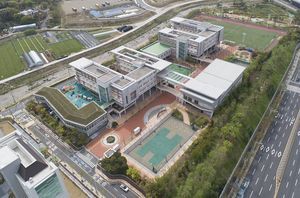North Korean Hypersonic Missile Test Aimed at Striking U.S. Bases in Guam and Alaska
Daniel Kim Views
Experts say a new hypersonic missile test launch likely soon
Joint Chiefs of Staff “tracking and monitoring North Korea’s weapons development trends… improving our military response capabilities”
|
North Korea claimed on the 20th that it had successfully tested a ground jet of a multi-stage solid fuel engine for a new type of intermediate-range hypersonic missile. A hypersonic missile can fly at speeds exceeding five times the speed of sound (1.06 miles/s) and can change direction through glide flight near the target. As it is difficult to track and intercept with conventional air defense systems, this is called a “game changer” that can change the landscape of warfare. The countries that have successfully developed hypersonic missiles are the United States, Russia, and China. North Korea is enhancing the completeness of the intermediate-range hypersonic missile by testing the solid fuel engine to be used in this missile on the day following the test launch of the intermediate-range hypersonic missile last January.
Experts analyze this as an attempt to strike Guam or Alaska, where U.S. military bases are located, to prevent the deployment of U.S. reinforcement forces in the event of a crisis on the Korean Peninsula. The military authorities also estimate that North Korea’s engine test is for missile performance improvement and stated that they are enhancing their actual deterrence and response capabilities while continuously tracking North Korea’s weapons development trends in response to the advancing nuclear and missile threats from North Korea.
North Korean state-run media, including the Korean Central News Agency, reported that a successful ground jet test of the multi-stage solid fuel engine for the new intermediate-range hypersonic missile was conducted at the West Sea Satellite Launch Station in Tongchang-ri, Cholsan County, North Pyongan Province, in the presence of North Korean Leader Kim Jong Un. This test, like the high-thrust solid fuel engine test for the intermediate-range ballistic missile in November last year, was conducted separately for the first and second-stage engine combustion.
[yarpp]
North Korea has previously announced that it has secured the engine’s reliability by test-launching a propulsion body equipped with a solid fuel engine. It was tested last November with a hypersonic warhead on January 14. Therefore, it is expected that North Korea will proceed with an additional hypersonic missile test launch within 1-2 months.
Concerning these trends in North Korea, the Joint Chiefs of Staff stated, “South Korea and the U.S. have been continuously tracking North Korea’s weapons development trends and are evaluating various possibilities regarding North Korea’s public report today” and “South Korea and the U.S. are also enhancing their actual deterrence and response capabilities in response to the advancing nuclear and missile threats from North Korea.”
A military official said, “Compared to the hypersonic missile launched on January 14, it looks almost the same except for the name ‘new model,'” and “It is assumed to be a test to improve performance such as range by improving the engine problems found in the previous test launch.”
Experts also assessed North Korea’s engine test, just over two months after the hypersonic missile test launch, to correct problems found in the test launch and increase the range.
Shin Jong Woo, a senior researcher at the Korea Defense and Security Forum (KODEF), said, “Compared to the engine test in November last year, the flame was longer during this engine test, and it seems that the extension of combustion time was confirmed.” He added, “It appears to be an attempt to increase the range to attack U.S. reinforcement force bases in Guam or Alaska with hypersonic missiles.”
Shin predicted, “North Korea will move according to the scenario it has already set,” and “Soon, it will show the ability to strike Guam or Alaska by launching a new intermediate-range hypersonic missile equipped with the engine ground tested this time, and then demonstrate the ability to strike the U.S. mainland by additionally test-launching an intercontinental ballistic missile (ICBM).”
Yang Moo Jin, a professor at the University of North Korean Studies, interpreted North Korea’s statement that “the successful major test completed the new intermediate-range hypersonic missile” as a pre-announcement of a missile test launch that will be conducted soon. Regarding Leader Kim’s direct evaluation that the military strategic value of the new intermediate-range hypersonic missile is as vital as the ICBM, he analyzed it as “suggesting that this missile is for the U.S.”
Professor Yang added, “It’s unclear whether the solid fuel hypersonic missile that North Korea will test soon is cruising or gliding, but it’s pretty concerning in that it can neutralize the kill chain and missile defense system of South Korea and the U.S., whether it’s cruising or gliding.
Yang Uk, a research fellow at the Asan Institute for Policy Studies, said, “This test is a follow-up to the test launch of a new intermediate-range hypersonic missile on January 14,” and “It appears that the combustion time of the first stage rocket was verified through the ground jet test. Considering that a separate test was conducted, it is assumed that the combustion time has increased compared to the previous launch.” He also said, “The increase in combustion time means an increase in range, or it can be seen as a substitute for the ground test as the range was not verified as an IRBM in the last launch.”











Most Commented